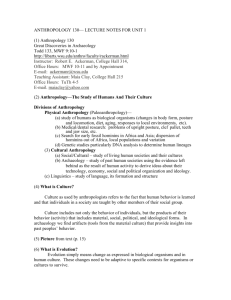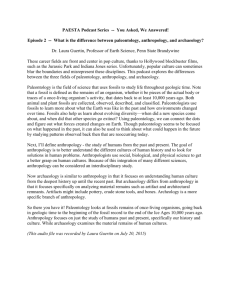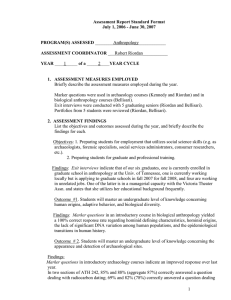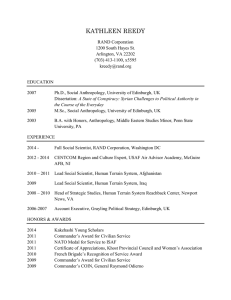Dr. East's Family Tree Part 1, Unit 1
advertisement
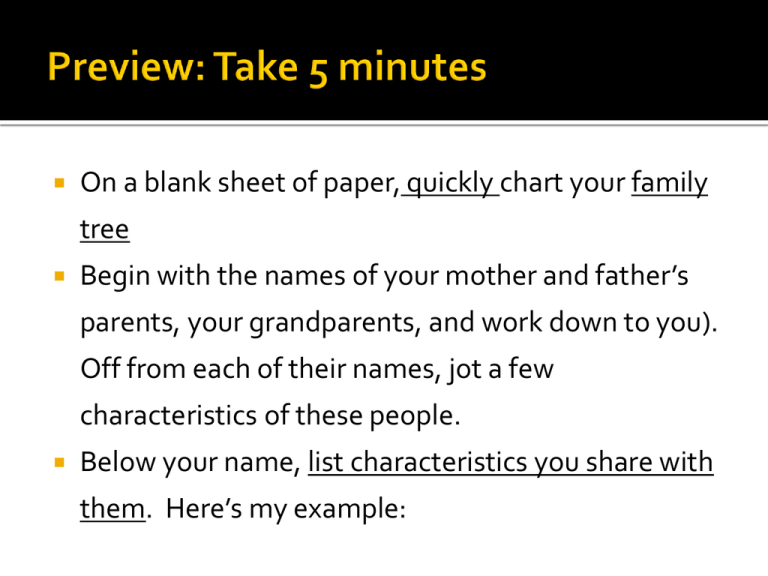
On a blank sheet of paper, quickly chart your family tree Begin with the names of your mother and father’s parents, your grandparents, and work down to you). Off from each of their names, jot a few characteristics of these people. Below your name, list characteristics you share with them. Here’s my example: Dr. East, 9/5/2013 Pre-history is that history that predates the written word. most of our history was part of the Paleolithic age (literally “old age of stone”, 2.5 million years ago (mya) to 8,000 B.C. during this time human like creatures evolved from some sort of ancestor that predated us and chimpanzees Hominids were various kinds of human ancestors that walked upright. ▪ invented tools, ▪ learned how to make fire, and ▪ developed oral languages and spiritual beliefs Occurred between 100,000 – 400,000 years ago 1. 2. 3. 4. By what methods do people understand what happened in pre-historic times (i.e., the time before the written word)? How do we as humans (homo sapiens) compare to other types of hominid relatives? How did physical geography influence the lives of early humans? What were the characteristics of huntergatherer societies? Anthropologist = scientist that that studies anthropology Anthropology = the scientific study of the origin, the behavior, and the physical, social, and cultural development of humans (can be paleoanthropology or modern anthropology) “Paleo” simply means old What is “culture”? Archaeologist = scientist and historian that studies archaeology Archaeology = is the study of human activity in the past, is often described as sub-discipline of anthropology excavation (digging of sites), examining artifacts, architecture, bones, and whatever other material evidence is left over that may provide clues to past cultures What are some examples of artifacts? Not specifically the study of bones, but scientists will study bones in addition to other things like pottery or tools, etc. radiometric dating can be used study materials left at excavation sites, ex. carbon can be radiometrically dated Carbon Dating Explained by Instant Egghead (You tube) Paleontologist = scientist that studies paleontology Paleontology = the scientific study of prehistoric or ancient life often people look for fossils of ancient animals… these are the bone scientists focus is on animals, plants, and geological surroundings NOT people For both archaeologists and paleontologists, work done outside and in laboratory Geneticist = is a biologist who studies genetics Genetics = the science of genes, heredity, and variation in humans and other organisms. They try to examine DNA What would a paleogeneticist do? Ardipethecus Ramidus, oldest most complete skeleton of a hominid Scientists have found other bits and pieces that are older but this is the most complete Video is from 2009 narrated by Mike Rowe (from reality show Dirty Jobs, video on Discovery Education) Segment from beginning thru. 23 min. in and then section about what did Ardi looked like.

